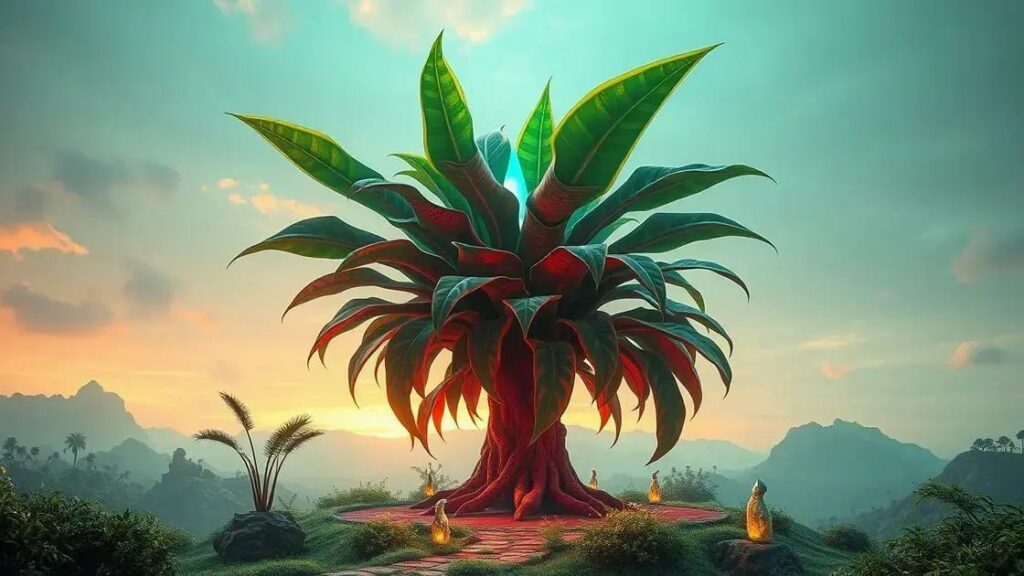How to take care of a dracena plant is a question on many indoor gardeners’ minds. With its stunning foliage and air-purifying qualities, this plant deserves the right care. Let’s explore effective tips and tricks to keep your dracena thriving.
Table of Contents
ToggleEssential dracena plant care tips for beginners
How to take care of a dracena plant is essential for maintaining its beauty and health. Beginners often find themselves wondering what steps to follow to ensure their plant thrives. In this section, we will provide valuable tips to help you care for your dracena effectively.
Understand light requirements for your dracena
Dracena plants prefer bright, indirect sunlight. Too much direct sunlight can scorch their leaves. Here are some light conditions to consider:
- Optimal: Bright, filtered light for several hours a day
- Low light: Some varieties can tolerate lower light conditions
- Avoid: Direct sunlight, which can cause leaf burn
Establish a proper watering schedule
Knowing when to water your dracena is crucial. This plant prefers to dry out between waterings. Follow these guidelines:
- Check the top inch of soil. If it’s dry, it’s time to water.
- Water thoroughly, allowing excess to drain.
- Avoid letting the plant sit in water to prevent root rot.
Choose the right soil and pot
Using the best soil for your dracena is vital. A good mix is well-draining yet retains some moisture. Consider the following soil characteristics:
- Rich in organic matter
- Good drainage to prevent root rot
- pH level of 6.0 to 6.5 for optimal nutrient absorption
Fertilize dracena plants wisely
Fertilizing your dracena during the growing season can enhance growth. Use a balanced, water-soluble fertilizer every 4-6 weeks. Here’s how to do it:
- Dilute the fertilizer to half the recommended strength to avoid over-fertilization.
- Apply during the spring and summer for best results.
- Stop fertilizing in the fall and winter when the plant is dormant.
Identify common dracena plant problems
Being aware of potential issues can save your plant. Here are common problems and their solutions:
| Problem | Symptoms | Solution |
|---|---|---|
| Yellowing leaves | Leaves turning yellow may indicate overwatering. | Check soil moisture and reduce watering. |
| Brown leaf tips | Tips turning brown could mean low humidity or underwatering. | Increase humidity or adjust watering practices. |
| Stunted growth | Slow growth may suggest insufficient light or nutrients. | Reassess light levels and fertilize as needed. |
By implementing these essential dracena plant care tips for beginners, you’ll set your plant up for success. For more insights, consider exploring indoor gardening techniques.
Understanding the watering schedule for dracena

Understanding the watering schedule for dracena is essential for keeping your plant healthy. Dracena plants thrive when their watering needs are correctly met. In this section, we’ll discuss how to establish the perfect watering routine for your dracena.
How often should you water your dracena?
The frequency of watering depends on several factors, including the plant’s size, pot size, and the environment. Here’s a quick guide to help you determine when to water:
- In spring and summer: Water every 1-2 weeks as the plant actively grows.
- In fall and winter: Reduce watering to every 2-4 weeks during dormancy.
- Monitor soil: Always check the top inch of soil before watering.
Signs your dracena needs water
It’s crucial to recognize signs that your plant needs hydration. Keep an eye out for:
- Leaves curling or drooping: This can indicate underwatering.
- Yellowing leaves: Often a sign of overwatering.
- Dry soil: If the top inch of soil feels dry, it’s time to water.
Best practices for dracena watering
Following these best practices can ensure your dracena remains healthy and vibrant:
- Water thoroughly until excess drains from the bottom of the pot.
- Use room-temperature water to prevent shocking the roots.
- Ensure proper drainage to avoid root rot.
Creating the ideal watering schedule
To develop an effective watering schedule for your dracena, consider using the following table:
| Season | Water Frequency | Soil Check Frequency |
|---|---|---|
| Spring | Every 1-2 weeks | Every 4-5 days |
| Summer | Every 1-2 weeks | Every 4-5 days |
| Fall | Every 2-4 weeks | Every week |
| Winter | Every 2-4 weeks | Every week |
For more tips on maintaining your dracena or other plants, consider exploring indoor gardening techniques.
Identifying common dracena plant problems and solutions
Identifying common dracena plant problems and solutions is crucial for maintaining a healthy indoor garden. These plants can occasionally face issues that may affect their growth and appearance. In this section, we will discuss frequent problems and how to address them effectively.
Recognizing the signs of overwatering
Overwatering is one of the most common issues dracena plants face. Signs include:
- Yellowing leaves: This typically indicates excess moisture.
- Leaf drop: Lower leaves may start falling off.
- Mushy roots: Roots may become soft or rotten when consistently overwatered.
Addressing underwatering indications
On the flip side, underwatering can also harm your dracena. Look out for:
- Wilting leaves: Leaves may droop or feel thin.
- Brown leaf tips: This is a clear sign that the plant is thirsty.
- Dry soil: If the soil is extremely dry, your plant likely needs water.
Common pests that affect dracena plants
Dracena plants can fall victim to several pests. Here are some to watch for:
- Spider mites: These tiny arachnids leave webbing and stippling on leaves.
- Mealybugs: White, cotton-like clusters on stems and leaves indicate an infestation.
- Scale insects: Look for small, brown bumps on the plant’s surface.
If you notice any of these pests, act promptly by using insecticidal soap or neem oil.
Dealing with environmental stressors
Your dracena may experience stress from environmental factors. Common stressors include:
- Light levels: Too much or too little light can cause leaf discoloration.
- Temperature fluctuations: Dracena prefers a stable temperature between 60°F and 75°F.
- Low humidity: Dry indoor air can lead to browning leaf tips.
Ensuring your plant has the right conditions can prevent many of these issues.
Quick reference for common dracena problems
Here’s a quick table summarizing the common problems along with their solutions:
| Problem | Symptoms | Solution |
|---|---|---|
| Overwatering | Yellow leaves, drooping | Reduce watering, ensure proper drainage |
| Underwatering | Wilting, brown tips | Increase watering frequency |
| Pests | Webbing, white clusters | Use insecticidal soap or neem oil |
| Environmental Stress | Discoloration, browning tips | Adjust light, humidity, and temperature |
By carefully monitoring your plant and addressing these common dracena problems, you can enjoy a flourishing indoor garden. For a deeper insight into caring for dracena, consider exploring indoor gardening techniques.
In conclusion
Caring for a dracena plant requires attention to detail and understanding of its needs. From establishing a proper watering schedule to identifying common problems and their solutions, you can ensure your dracena remains healthy and vibrant in your indoor space. By incorporating the tips shared in this guide, you’ll be well on your way to becoming an expert in dracena care. For further insights, check out these tips on enhancing your indoor garden.

